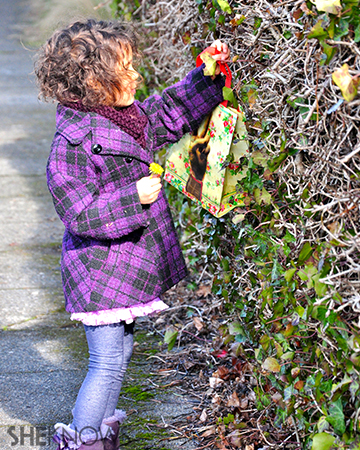
Engage your child outside
The beginning of spring is an exciting time of year with fresh blooms poking out of unexpected places and color where there was none before. Foster your child's appreciation for the small things by collecting pieces of nature and investigating their names and purpose in the circle of life.
No matter the efforts we make to coax our kids into playing outside in the colder months, the great outdoors are not as alluring when trees are bare and fingers are gloved. As winter softens into spring, children will often default to indoor play, even when the sun shines and the skies are the warmest they’ve been all year.
We can help them fall in love with nature all over again by cultivating awareness. Your child’s natural curiosity will do the rest.
A simple formula for taking self-guided nature walks
Gather supplies
If your child can walk, I recommend leaving the stroller at home. Allow your child to explore the earth on his own two feet. Grab a reusable shopping bag and your camera and prepare to get a little dirty. Try to remember that “dirt don’t hurt.” Tell your child you are going on a treasure hunt for beautiful plants and animals to keep him engaged and excited to explore.
Plan, or not
Though parks and botanical gardens make for abundant scenery, there’s something magical about walking out of your front door and recognizing that the earth is alive everywhere. If you live in a very urban area you might plan to walk to a park where you can find more flora and fauna. Otherwise, let your child lead the way for a change. If you never leave your front yard, that’s okay, too.
Keep your eyes open
This may be the most important part. We pass many mysteries of nature each day without taking much notice. Look for spider webs up high, ants on the ground, blooms that have fallen onto the sidewalk. I follow two general rules: (1) Don’t pick other people’s flowers. Wild flowers and fallen flowers are fair game. (2) Take photos of the insects rather than taking them home.
If your child is very young, provide more guidance. Show her to gently touch plants, allow her to feel the cold smooth weight of a rock in her hand, tickle her palm with the edge of a leaf.
Say yes
Play a game with yourself: see how often you can say “yes” to your child rather than “no.”
Yes, you can put that rock in the bag.
Yes, the fern is beautiful.
Yes, you can pick up the leaves on the ground.
Yes, you can hold that dandelion.
Yes, we can go down that street.
Identify
Offer to take photos of anything she likes that she cannot put in the bag. Also, name every thing she notices.
Lavender. Roses. Ivy. Potato bug. Bird.
If you are unsure of the name, you can download the Leafsnap application to your smartphone and learn something new yourself. For identifying bugs, I recommend BugGuide.
Recap

Lay out all of your treasures when you return home. Look through the photos. Review the names. Ask your child to recall what they liked about each item.
Take it further
If your child is older and interested, go to Google and Wikipedia to find more information about the flora and fauna in your neighborhood. Consider why each plant and animal does what it does.
For example, the potato bug (Armadillidium vulgare) feeds chiefly on decaying plant matter. Ask your child, why do you think this job is important?
As for dandelions, these plants contain abundant vitamins and minerals, they have medicinal properties for humans and they also provide nectar and pollen for bees.
Repeat as often as possible
Don’t be scared inside by spring showers, take an umbrella and notice what happens to the plants and animals when it rains. You will find that nature never  fails to stimulate and surprise. Express joy and wonder for the earth and your children, too, will learn to love the outdoors.
fails to stimulate and surprise. Express joy and wonder for the earth and your children, too, will learn to love the outdoors.
More about nature walks
6 Ways nature can boost your mood
Parenting's dirty little secret
Teach your kids the value of nature